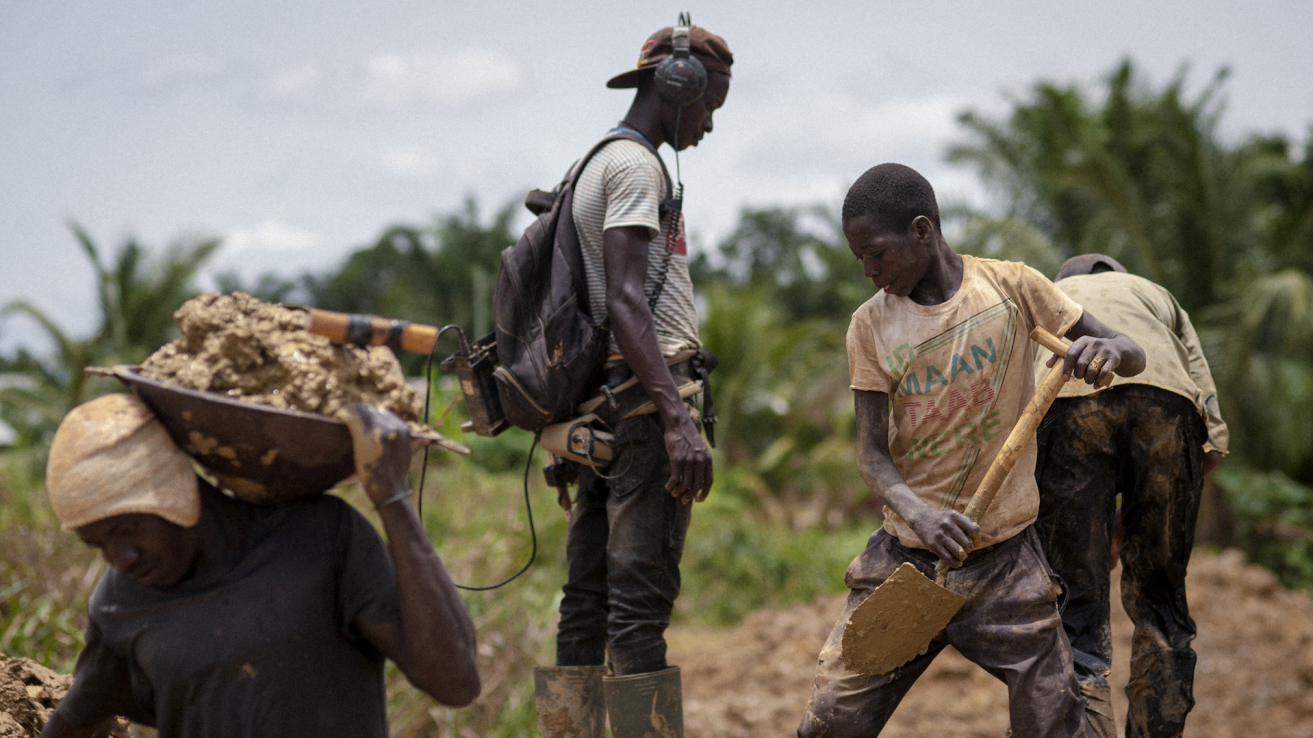
Comprehensive Overview of Gold Mining Policies and Legislation in Ghana Since Independence
SEO Article Description: Discover a comprehensive analysis of all the gold mining policies and legislation enacted in Ghana since independence. This article provides a detailed executive summary of key mining laws, their impact on the sector, and the government's efforts to regulate and improve the
Highlights:
- Post-Independence Era: Nationalization and State Control
- Recent Policies: Addressing Illegal Mining (Galamsey) and Environmental Sustainability
- Current and Future Policy Directions
SEO
Keywords:
Ghana gold mining policies, gold mining laws in Ghana, Ghana mining sector
legislation, gold mining regulations Ghana, post-independence mining policies
Ghana, Ghana gold industry legal framework, illegal mining laws Ghana,
sustainable mining in Ghana, Ghana Minerals and Mining Act, Ghana mining sector
developments
Executive Summary: Overview of Gold Mining Policies and
Legislation in Ghana
Since
Ghana gained independence in 1957, the gold mining sector has played a pivotal
role in the country’s economy, contributing significantly to national revenue,
foreign exchange earnings, and employment. Various governments have introduced
a series of policies and bills aimed at regulating and managing the gold mining
industry, balancing foreign investment with local participation, addressing
environmental concerns, and combating illegal mining activities, particularly galamsey.
This article explores the key policies and legislation that have shaped Ghana's
gold mining sector from independence to the present day.
The
development of Ghana's gold mining legislation can be grouped into three main
phases: post-independence nationalization, liberalization in the 1980s and
1990s, and contemporary efforts focused on sustainability and combating illegal
mining. Each phase reflects the economic and political priorities of the
government of the time, as well as the evolving global market dynamics. This
executive summary and detailed analysis outline the major laws and regulations
passed since independence, highlighting the shifts in Ghana’s mining sector.
Post-Independence Policies: Nationalization and State
Control
1. The Minerals Act, 1962 (Act 126)
In
the early years following independence, the Ghanaian government sought greater
control over its natural resources. The Minerals Act of 1962 gave the
government significant ownership and control over all mineral resources in
Ghana. Under this law, the state had the authority to manage, regulate, and
engage in mineral exploration and extraction. The policy aimed to curb foreign
dominance in the mining sector and ensure that the wealth generated from the
country’s vast gold resources directly benefited the state.
2. Establishment of the State Gold Mining Corporation
(SGMC)
The
establishment of the State Gold Mining Corporation (SGMC) further consolidated
state control over gold mining activities in Ghana. SGMC was tasked with
managing the government’s interests in several large gold mining companies,
including Prestea Goldfields and Tarkwa Goldfields. This policy was intended to
ensure that revenue generated from gold mining would be reinvested in the
nation’s development rather than being repatriated by foreign companies.
Liberalization Era: Attracting Foreign Investment
(1980s–1990s)
3. The Minerals and Mining Law, 1986 (PNDCL 153)
By
the 1980s, Ghana faced significant economic challenges, prompting the
government to liberalize its mining sector in order to attract foreign
investment. The Minerals and Mining Law of 1986 (PNDCL 153) marked a
shift from state control to a more liberal regulatory environment. This law
provided incentives for foreign investors, including tax holidays, exemptions
on import duties, and the right to repatriate profits. The law also set the
framework for the creation of the Minerals Commission, which was tasked
with regulating the mining sector, facilitating investment, and ensuring the
enforcement of mining regulations.
4. The Small-Scale Gold Mining Law, 1989 (PNDCL 218)
In
an effort to formalize the activities of small-scale miners, the government
passed the Small-Scale Gold Mining Law in 1989. This law allowed for the legal
operation of small-scale mining and set out provisions for licensing. The goal
was to bring informal mining operations under state regulation to prevent
environmental degradation and ensure that small-scale miners contributed to the
national economy. However, the law also faced challenges in curbing the growing
problem of illegal mining, commonly known as galamsey.
Modern Mining Policies: Regulation, Sustainability, and
Combating Illegal Mining
5. The Minerals and Mining Act, 2006 (Act 703)
The
Minerals and Mining Act of 2006 (Act 703) consolidated previous mining
laws into a comprehensive regulatory framework, aimed at maintaining Ghana’s
position as a major gold producer while addressing the environmental and social
challenges of mining. The law reaffirmed the government's rights over all
mineral resources and provided clear guidelines for granting mineral rights,
royalties, and lease terms. It also established stricter environmental
regulations, mandating Environmental Impact Assessments (EIAs) for mining
projects to safeguard natural resources.
6. Local Content and Participation Regulation (LI 2173,
2012)
To
ensure that Ghanaians benefit directly from the gold mining sector, the Local
Content and Participation Regulation was introduced in 2012. This regulation
required mining companies to prioritize the procurement of goods and services
from local suppliers and mandated that a minimum percentage of management
positions in mining companies be held by Ghanaians. The regulation aimed to
create jobs, stimulate local industries, and reduce the sector's dependence on
foreign expertise and resources.
7. The Minerals Development Fund Act, 2016 (Act 912)
Passed
in 2016, the Minerals Development Fund Act created a dedicated fund to ensure
that mining communities directly benefit from the revenues generated by mining
operations. Under the Act, a portion of royalties paid by mining companies is
allocated to this fund to support infrastructure development, education, health
services, and environmental remediation in mining-affected areas. The goal was
to mitigate the negative impacts of mining on local communities and promote
sustainable development.
8. The Minerals and Mining (Amendment) Act, 2015 (Act 900)
In
response to the growing issue of illegal mining (galamsey), the Minerals and
Mining (Amendment) Act of 2015 (Act 900) introduced stiffer penalties for
illegal mining activities. This amendment aimed to curtail illegal operations
that were contributing to severe environmental degradation, including the
pollution of major rivers. It imposed higher fines and longer prison sentences
for individuals and companies involved in illegal mining.
9. The Multilateral Mining Integrated Project (MMIP), 2017
The
Multilateral Mining Integrated Project (MMIP) was launched in 2017 to provide a
holistic solution to the galamsey crisis. This initiative focused on reclaiming
degraded land, formalizing small-scale mining, and providing training and
financial support to artisanal miners. It also aimed to strengthen enforcement
against illegal mining through joint efforts between government agencies and
local communities.
10. Ghana Landscape Restoration and Small-Scale Mining
Project (2021)
Launched
in 2021 with support from the World Bank, this project sought to promote
sustainable mining practices among small-scale miners. The initiative also
focused on restoring degraded lands and reforesting areas affected by mining.
It underscored the government’s commitment to achieving sustainability in the
mining sector while ensuring that mining activities contribute positively to
Ghana’s overall development.
Conclusion and Future Directions
Ghana’s
gold mining sector has undergone significant changes since independence,
evolving from state-controlled mining to a liberalized, investor-friendly
environment. Modern policies emphasize sustainable mining practices,
environmental conservation, and integrating small-scale miners into the formal
economy. However, challenges remain, particularly in addressing illegal mining
and ensuring equitable distribution of mining revenues.
As
Ghana continues to be a major player in the global gold market, future policies
will likely focus on balancing economic growth with environmental
sustainability and strengthening the governance of the sector to ensure
transparency, accountability, and community benefits.

